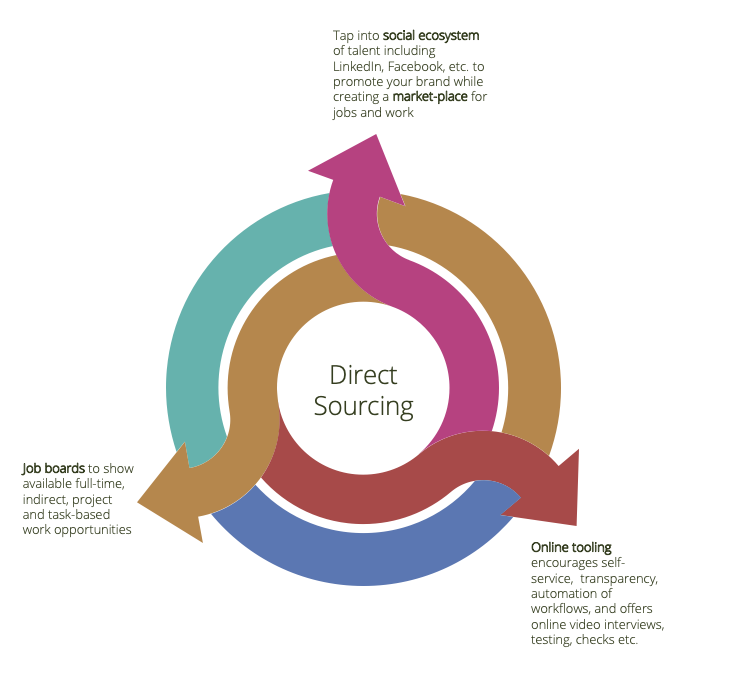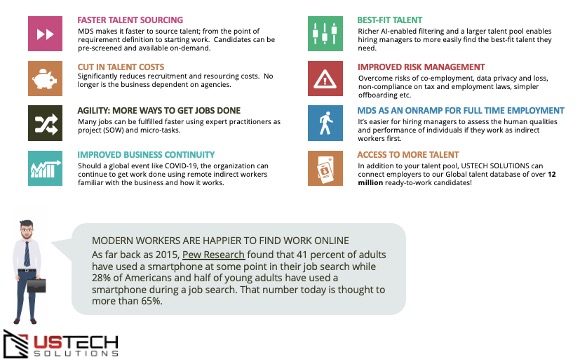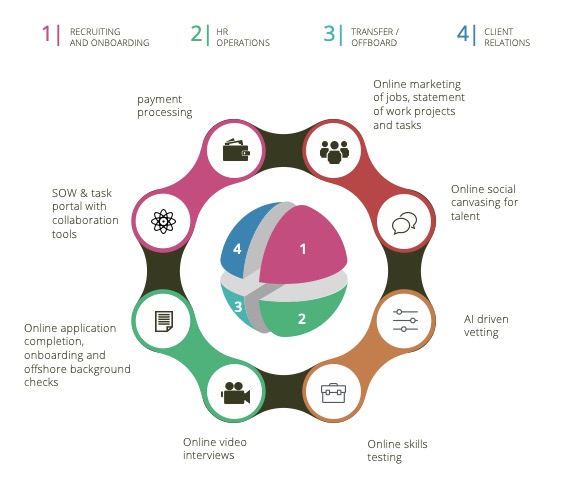3-minute read
2022 and the buzz about Direct Sourcing is getting noisy
According to Staffing Industry Analysts, 26% of US businesses today use direct sourcing and 41% plan to seriously consider it within the next two years. That’s because—so they say—it’s proven to result in economies of over 15% (generally savings on staffing agency fees).
%
Use Direct Sourcing
%
Plan to adopt
%
”Implementing
So what is it? And how can you include Direct Sourcing into your hiring strategy?
What is Direct Sourcing?
Direct Sourcing Definition
Direct sourcing refers to the process when a company harvests the talent pool formed by its own internal employment and recruiting activities, along with its brand reach to source gig workers.
This talent pool might include individuals who’ve approached an organization through its social media presence, former employees, retirees or applications within the company’s own applicant tracking system.
Overview of Direct Sourcing Process

Direct Sourcing Benefits
#1 Reduce recruitment agency costs
Going direct for talent means you don’t have to pay agencies to find the best-fit talent you need.
#2 Boost productivity and retention
Access individuals who’ve worked for you (or in a partner business perhaps) in the past, who are already interested in your brand and its values, or have previously invested time in approaching you for a previous role or position. These individuals are likely to be more motivated to work for you (boosting productivity) and WANT to work for your enterprise (reducing attrition).
#3 Speed time-to-fill
We’re talking about a pool of candidates you already know about, or are just one message away from wanting to apply for your next role! That means you don’t have to wait for indirect partners to run around and find candidates for you. Use of direct sourcing is demonstrating its value in consistently reducing time-to-fill of vacant roles.
#4 Decrease risk
For people your organization already knows, you can make a hiring decision with the confidence that someone in your business already knows (and can potentially vouch for) the individual you are considering hiring. They may even have a track-record of previous work performed for your organization. For individuals applying via social media or taking an interest in your business, there’s always the opportunity to pre-vet your talent pool—so you know that any of the available talent is already one step closer to joining your business because they’ve already cleared the hurdle of background checks.
#5 Increase recruiting efficiency
Adoption of direct sourcing means the cost of recruitments goes down. Much of the work has already been done by self-service tools your candidates have done themselves in their own time. It’s also possible to integrate video interviews into your direct sourcing portal so that you already have a video testimonial of prospective candidates.


Adopting Direct Sourcing
One of the greatest challenges facing the recruiting industry at present is changing attitudes and behaviors around work packaging and resourcing. Decisions relating to the allocation and sourcing of work are normally so fragmented between IT, procurement and HR functions. Another issue is the segregation of full-time recruitment functions, indirect contingent staffing vendor management, procurement programs to source consultants and outsourcing; and IT teams responsible for automation (including the provisioning of robots that can be used to fulfil tasks instead of humans). In the case of Direct Sourcing adoption, it works better when departmental managers are encouraged to adopt a ‘direct sourcing first’ policy.
The Role of Technology
You will need a technology platform to implement Direct Sourcing. A number of traditional Vendor Management Systems (VMS) vendors now offer a Direct Sourcing module. Not all of them offer the dexterity you might need to fully maximize your direct sourcing opportunity—so it pays to shop around, or work with an impartial partner like USTECH SOLUTIONS to recommend a suitable solution based on your requirements.


Discover how to leverage direct contingent staff sourcing

